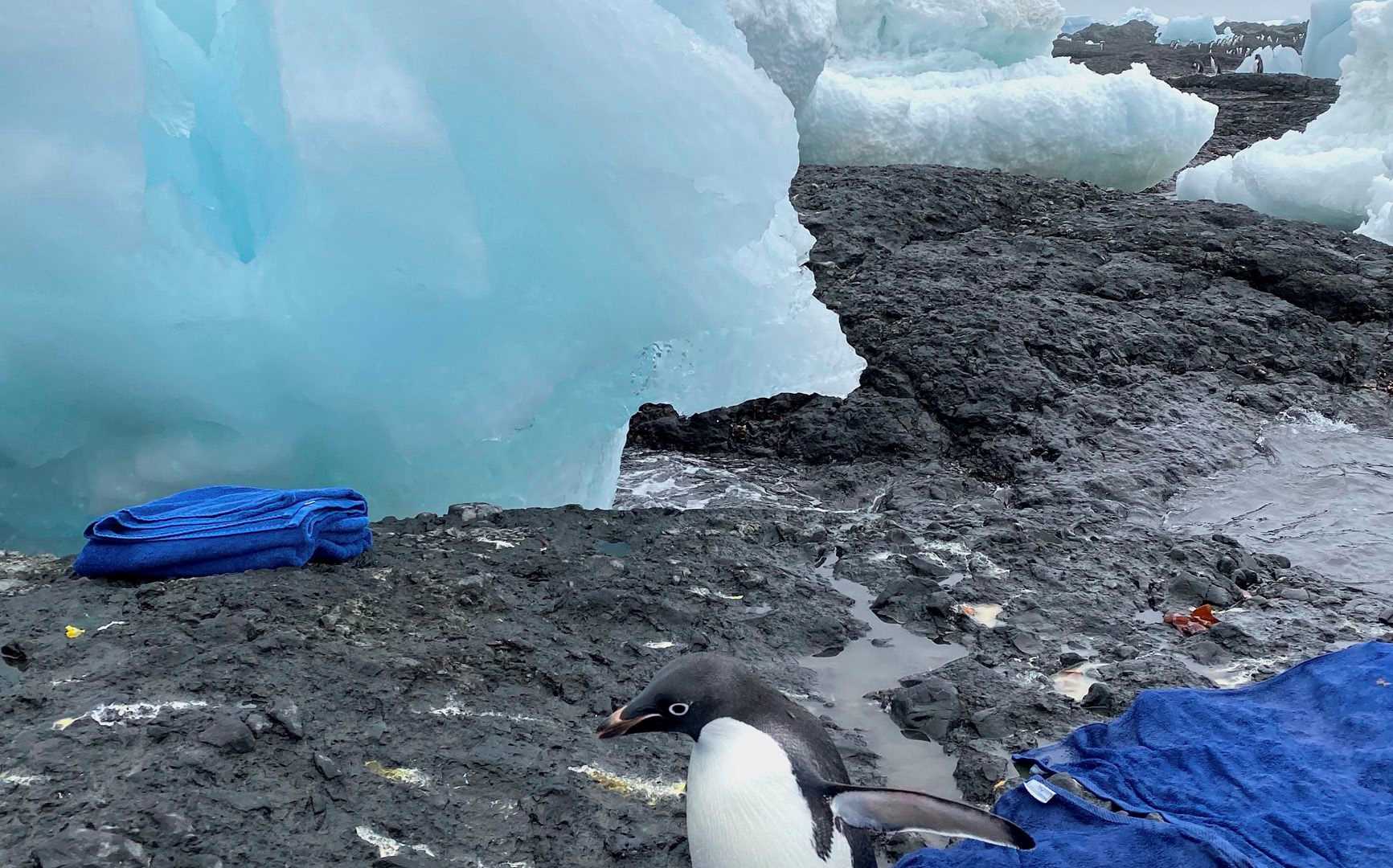Waking well before breakfast to peer through fog, we started this third day of Antarctic exploration observing an immature emperor penguin quietly occupying an expanse of sea ice. It gave us a few over-the-shoulder looks before tobogganing in the opposite direction; our chilly photographers went for another cup of coffee. All morning, National Geographic Orion worked her way northeast through lines of sea ice and bergs in Erebus and Terror Gulf, part of the Weddell Sea.
Our afternoon stop at Brown Bluff featured an unusual volcano as the backdrop for Gentoo penguins hovering close to their chicks and Adelie penguins traveling in great numbers along the beach highway. Grounded icebergs clogged the shoreline but with a bit of exploration and skilled Zodiac driving, we found an access route to the landing, and everyone walked on the Tabarin Peninsula, mainland Antarctica. Reaching their fifth, sixth or, for many, seventh continent was the highlight of the afternoon!
Effectively a cut-away cross-section of a volcanic cone about one million years old, the assemblage of geologic features at Brown Bluff easily showcase its history of subglacial eruptions. Also called a tuya, this unique structure is something of a global rarity as it requires active volcanism in a region concurrently covered with thick ice. In fact, Antarctic has over ninety documented subglacial volcanoes, and also number that extend above the ice!
Brown Bluff’s lowest layer, pillow basalts, formed when molten lava erupted into water and quickly cooled in bubbles. Horizontal lava beds and cliffs of ochre-to-rust-colored ash tower above. Tuff boulders have tumbled down from the heights to land on the beach, making their details accessible – fine layers of ash and cinders embedded with volcanic bombs (glass-like shards from when explosive lava came into contact with water and steam). Decades of wind erosion have given them odd yet beautiful shapes; today, penguins and gulls nest atop the largest boulders.
As we sail overnight to the western side of the Antarctic Peninsula, dramatic tabular icebergs pass along the starboard side while humpback whales feed within a few boat lengths on the port-side. It’s hard to know which facet of this incredible wilderness one should focus on!







